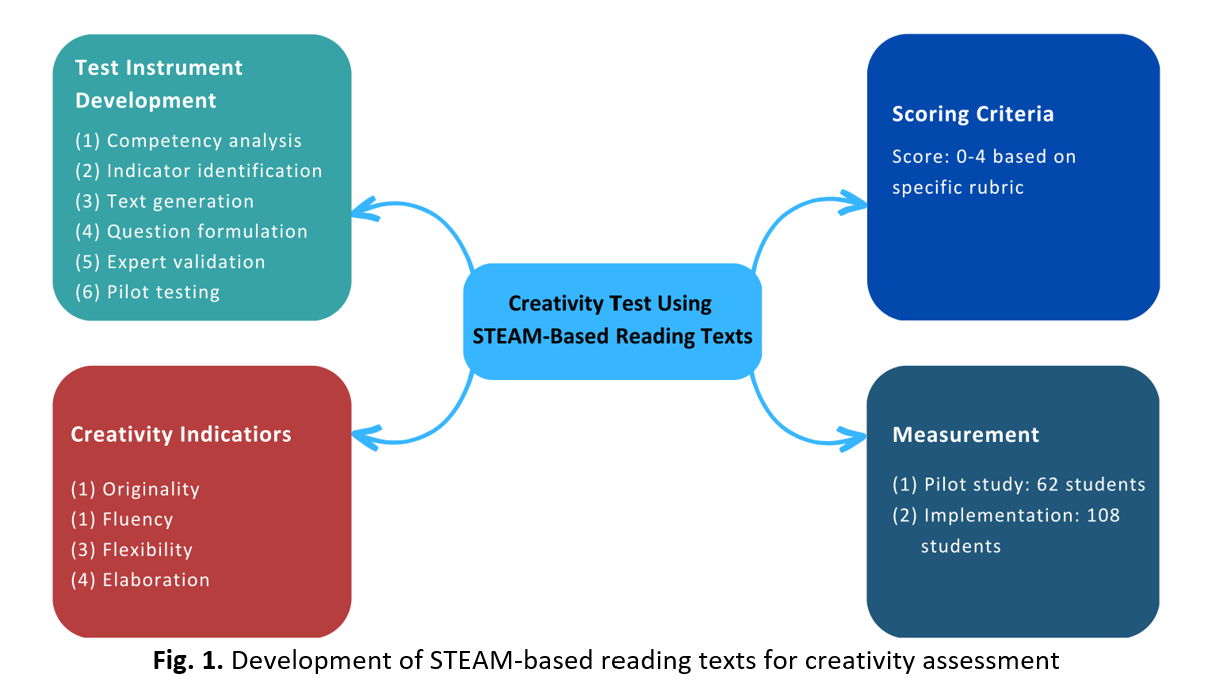Exploring Students’ Creativity Using STEAM-Based Reading Texts
DOI:
https://doi.org/10.37934/araset.44.1.181187Keywords:
Creativity, STEAM Education, Reading-TextAbstract
Creative thinking is one of the important skills required to face the 21st century challenges. However, students’ creativity assessment is challenging. Grounded on the paradigm that creativity is a tangible parameter, this study aims to explore students’ creative thinking skill via a reading-based creativity test. The test was developed by considering the creativity indicators defined by Paul Torrance, i.e., fluency, flexibility, originality, and elaboration. In this creativity test, the reading and the questions were designed to make students integrate their science, technology, engineering, arts, and mathematics (STEAM) knowledge. Based on the empirical validation, the creativity test had a reliability of 0.897, indicating that the test was reliable to measure students’ creativity. Due to the Covid-19 pandemic, the test was conducted online to 108 junior high school students in East Java, Indonesia. In general, the students achieved the highest level of creativity in terms of originality that gained average score of 3.63 (with scale 4.00). Meanwhile, they underperformed on the aspects of elaboration having average score of 2.40. There were 93 and 79 students who responded very well on the originality and fluency aspects, respectively. In contrast, respectively over 30% and 50% of students showed a lack of creativity on the aspect of flexibility and elaboration. These creativity assessment data are beneficial for educational stakeholders especially to increase the quality of teaching and learning related to STEAM education.
Downloads





























